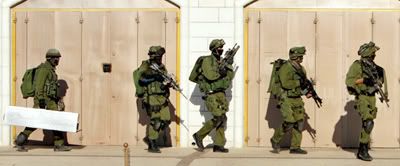
This man has just come out of a ‘battle’ with the Malaysian enforcement officers, trying to protect a Hindu temple which the authorities want to demolish.
Sadly this ‘battle’ is happening quite regularly all across Malaysia with the authorities going all out to bring down the number of unregistered temples. And with more such temples demolished, more disgruntled Malaysian Indians come to the fore - like this man. If the government is not careful, it is in danger of breeding a Hindu radical in people like this man.
Before I go further, let’s look at the temple situation in Malaysia. There are tens of thousands of temples here – right from those well-established and registered to unregistered zinc-roofed temples to illegal shed attachments to some dwellings.
Some of the established and registered temples are better administered and do a good job as a place of worship for the community.
As for the second category of temples, these are usually places of worship founded in residential areas of the community and had, over the years, become popular not just with the local community but also for people from outside the area. Another feature of these temples is that they are usually found in former estate land. After the plantation has been sold to property developers, they then become part of the plantation that need to be removed. Usually these temples are very old – some even touching the other side of 100 – and very popular with its now ex-estate residents and outsiders.
And the third category of temples – the shed at the back of the house – is an extension of these estate temples. These temples are created by people who had moved out of the estates and to continue their daily prayers, they just resort to building a temple next to their house.
The Hindu Sangam is and has been for years trying to register all the temples in Malaysia. I am all for such a move, but not for the third category of temples. The temples in the backyard act more like a personal prayer room and should not be allowed to mushroom in residential areas. In their places, a common registered temple should be allowed to be built for everyone in the community.
I believe temples should not just be a place for someone to pray but also a place for the community to gather, socialize and develop their cultural heritage and roots. And I think many will agree with me.
But this is where the local authorities, state government and even the federal government fail to follow the plot.

As I see it, temples – all categories of them – are seen as a nuisance and eyesore in Malaysia. The Selangor state government for example does not allow for new temples to be built in the state. In fact it does not even allow renovations to present established temples. And Selangor has been the prime mover in demolishing the former estate temples. In the past five years, I have personally covered news assignments of temples aged 100 years or more being demolished ruthlessly and many times under very violent conditions.
Many times the reasoning given is that these temples are illegal, unregistered and public nuisance.
Well, they have become illegal because the land owners who gave the land to these temples have now sold the land for a profit to developers who want the temple removed from the residential project.
The temples remain unregistered because they are old and precede the registration requirement rulings. And they become public nuisance because the authorities do not allow refurbishments to these temples.
Instead of strictly sticking to the letters of the law, I think the authorities should be sensible in firstly allowing these temples time extensions to be registered and become legal. Then they should be allowed planning permissions to be upgraded and finally green light should be given for the construction of new temples in residential areas.
By doing so, in the long run, the government will see uniformity in Hindu temples in Malaysia, with even the old but unregistered temples becoming part of the process.
I think this will also solve the problems of shed temples mushrooming everywhere.
This can be done. There are examples of sensible local authorities and developers who had helped turn an old, zinc-roofed temple into a proper place of worship. The temple at the Mid Valley Megamall is just an example.
And surely in a country where more tolerance has been practiced when it comes to mosques, I am sure the authorities can similarly extend that sort of understanding for Hindu temples.
Failure to do this will only sideline the already disgruntled community and the last thing we need in Malaysia is an army of Hindu radicals.
For more read
a detailed coverage in
malaysiakini.






























